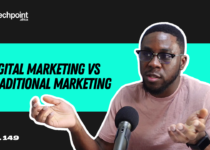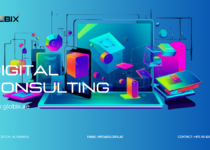Frame Your Brand Identity: A Strategic Blueprint for Lasting Impact
In today’s crowded market, brands are everywhere. But only a few stand out. Why? Because they have a strong brand identity.
Let’s break down how to develop a brand identity that’s memorable, trusted, and built to last.
✅ What Is Brand Identity?
Your brand identity is how your business presents itself to the world, conveying its look, feel, and message. It’s more than just a logo. It includes your:
• Logo and design elements
• Colors and typography
• Voice and messaging
• Brand values and mission
Think of it like a personality. It tells your audience who you are — before you say a word.
________________________________________
📜 A Quick History of Branding
Branding isn’t new. It dates back over 5,000 years. Ancient Egyptians marked cattle with hot irons to show ownership. In the 1500s, traders used marks to identify their goods.
By the 20th century, companies like Coca-Cola (est. 1886) and Nike (1971) had begun shaping emotional connections through their visual identity, slogans, and consistent storytelling.
That evolution gave rise to modern brand identity systems — visual and verbal elements designed to leave a lasting impression.
________________________________________
🧩 Step-by-Step: How to Develop a Brand Identity
________________________________________
1. Know Your Audience
Start with research. Who are you speaking to? What are their goals, pain points, and desires?
Tip: Build customer personas to guide your messaging and design.
________________________________________
2. Define Your Brand Mission and Values
Why do you exist? What principles guide your business?
Example: Patagonia’s brand identity is rooted in sustainability. It’s clear in everything they do.
Your mission and values will shape your brand’s tone and story.
________________________________________
3. Study the Competition
Look at brands in your space. Identify what makes them strong — or weak.
Don’t copy. Instead, find gaps you can fill or styles you can improve.
________________________________________
4. Choose Your Brand Voice
Your voice should reflect your personality. Are you:
• Professional?
• Friendly?
• Bold?
• Quirky?
Maintain a cohesive brand presence across all channels — your website, social media, emails, and advertisements.
________________________________________
5. Design Your Visual Identity
Here’s where you shape the look of your brand.
Focus on:
• Logo: Simple, timeless, and scalable.
• Color Palette: Use color psychology to evoke emotions.
• Typography: Choose fonts that reflect your tone.
• Imagery: Be consistent in photo and illustration styles.
Example: Apple uses minimal colors and clean fonts to reflect simplicity and innovation.
6. Build Brand Guidelines
Document your identity. A brand guide helps your team stay consistent.
Include:
• Logo usage rules
• Color codes
• Font pairings
• Tone of voice
• Image dos and don’ts
________________________________________
7. Apply It Everywhere
Now, please bring it to life. Apply your identity across:
• Website
• Social media
• Business cards
• Packaging
• Email templates
Consistency builds trust. Trust builds loyalty.
________________________________________
📈 Why Brand Identity Matters More Than Ever
According to a Lucidpress study, consistent brand presentation increases revenue by up to 33%. And research by McKinsey found that brands with strong identities grow faster than those without one.
In a digital-first world, your identity is your first impression. Make it count.
________________________________________
🚀 Final Thoughts
Learning how to develop a brand identity isn’t just a design exercise. It’s the foundation of your brand’s success. When done right, it:
• Builds recognition
• Connects emotionally
• Inspires loyalty
Start small. Stay consistent. And grow your brand with purpose

